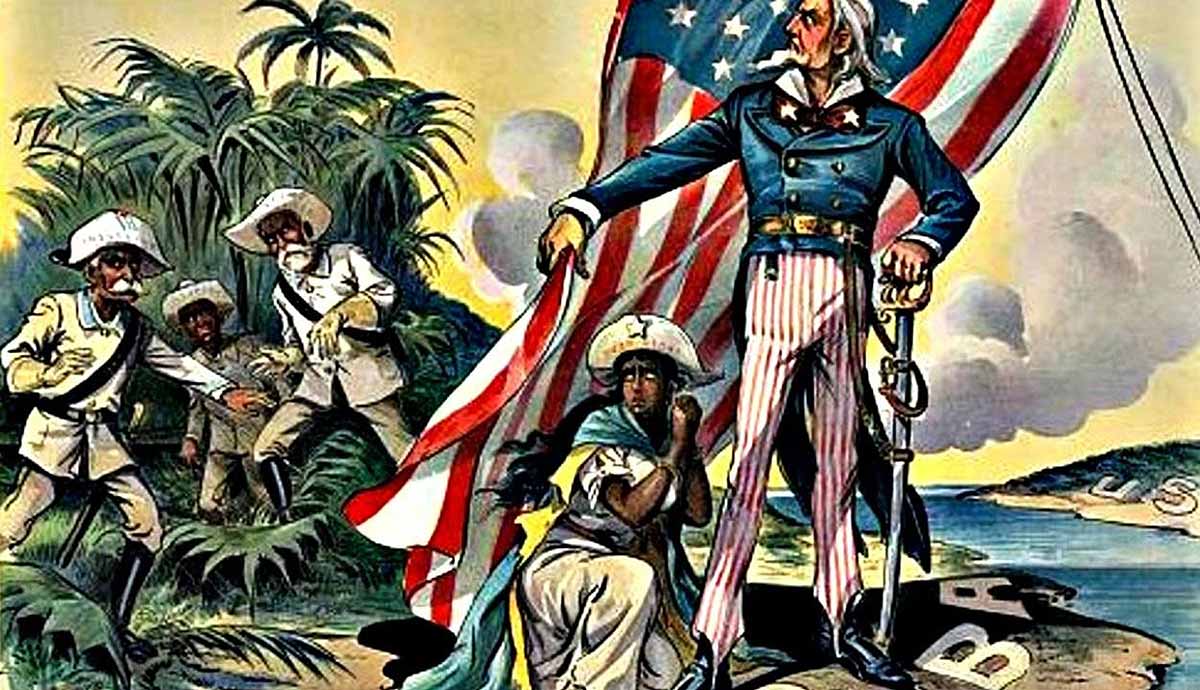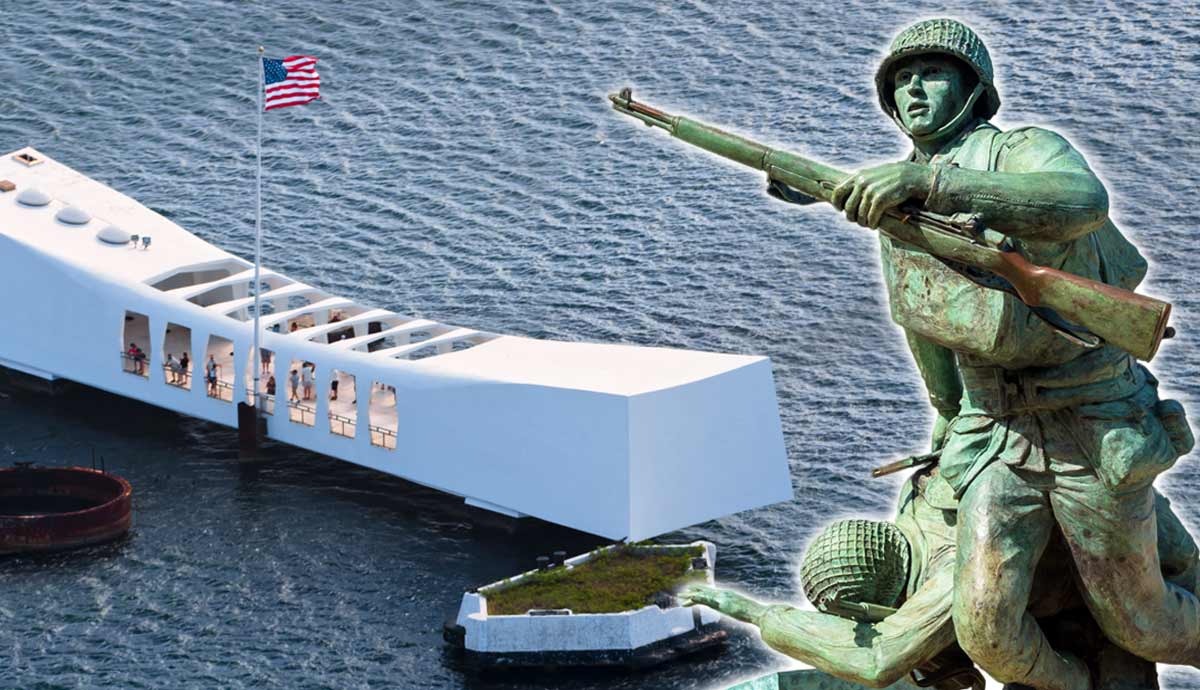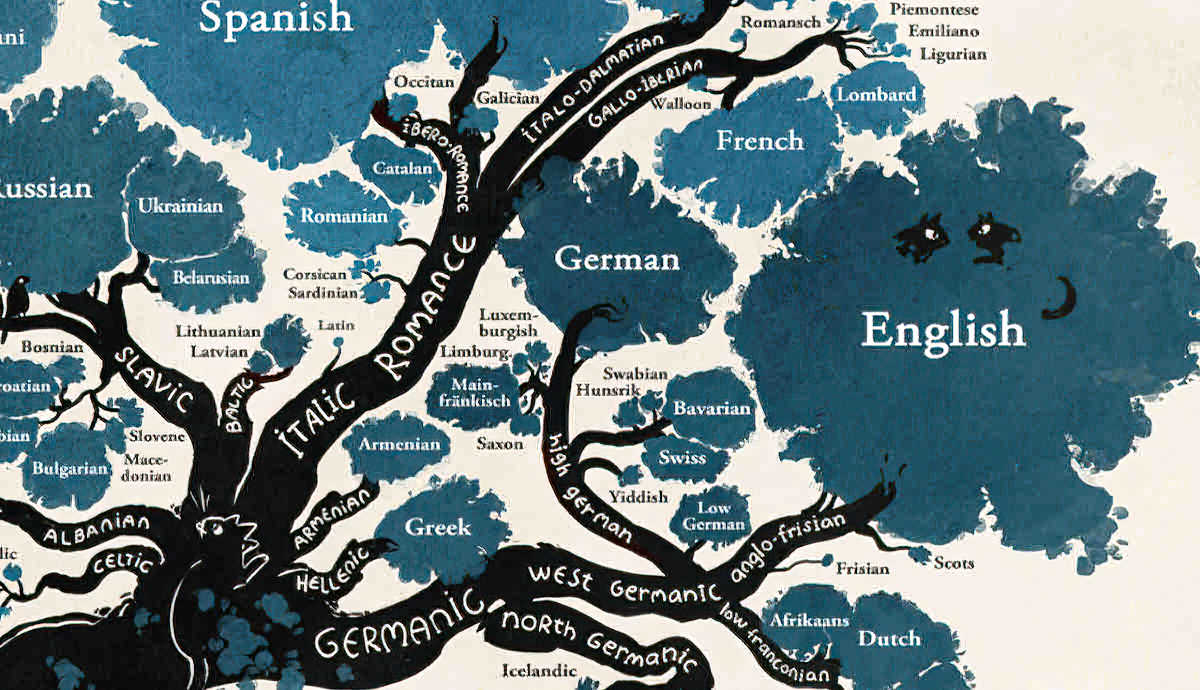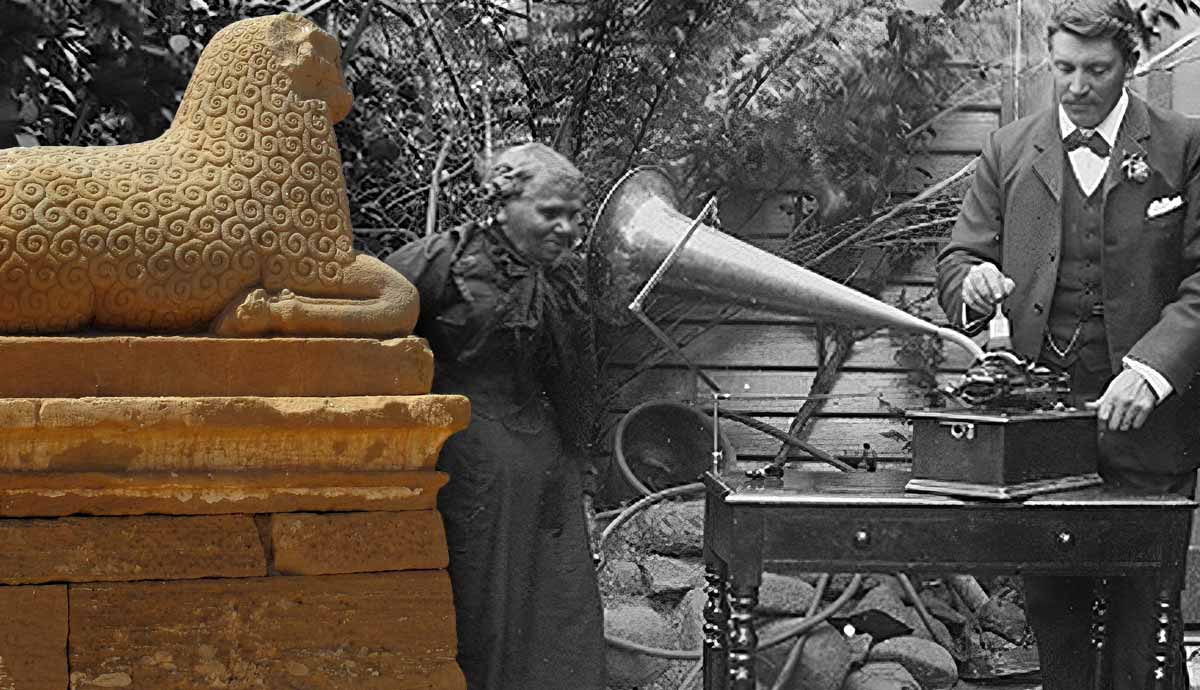
Like the Korean War and Mexican-American War, the Spanish-American War is rarely remembered by the layman. However, this brief war tremendously influenced America’s foreign policy, self-image, and international reputation. Decades after the Monroe Doctrine told European colonial powers to remain out of the Western Hemisphere, the United States flexed its own muscle to expel Spain from the Caribbean…and the Pacific Ocean. Although Spain was hardly a world power by 1898, the rapid victory of US forces in two separate theaters of combat revealed that a new world power had emerged. Taking Spain’s colonies for its own territory was a permanent shift of the US from quiet isolationist to globe-spanning diplomatic power.
1492-1808: Spain

From 1492 through the early 1700s, Spain was the dominant colonial power in the Western Hemisphere. However, the defeat of the Spanish Armada in 1588, which had intended to conquer Britain and return it to Catholicism, began a slow reversal of fortune for the nation that had discovered the New World. After the Industrial Revolution began in Britain in the mid-1700s, Britain became the dominant colonial power, especially with its victory in the French and Indian War. However, Spain continued to control most of South America, Central America, and the Caribbean. Its Viceroyalty of New Spain consisted of Mexico and Central America.
The successful American Revolution (1775-83), which resulted in the creation of the United States from Britain’s Thirteen Colonies on the eastern coast of North America, influenced an international wave of revolutions. Following the violent French Revolution (1789-94), which led to the rise of dictator Napoleon Bonaparte, Spain was swept up in the Napoleonic Wars. In 1808, as part of the Peninsular War (so named for the Iberian Peninsula of Spain and Portugal), Napoleon deposed the Spanish monarch and put his own brother on the throne. With Spain effectively eliminated as an independent nation, its colonies began to pursue independence.
1810-21: The Dissolution of New Spain

With Spain controlled by France, its colonial governors in the Western Hemisphere could scarcely receive reinforcements or military supplies to quell any rebellions. Within two years, rebellions began. In Mexico, poor economic conditions sparked unrest, leading to the formal beginning of a revolution for independence on September 16, 1810. Although this initial revolution was defeated, Spain’s position remained in jeopardy even after Napoleon’s defeat in 1814 and the return of the Spanish monarch.
In both New Spain and Peru, Royalists remained relatively strong until a revolution in Spain itself in 1820 removed the power of King Fernando VII. Now completely cut off from Spain, royalists crumbled by the end of 1821. After this collapse, Spain only retained a handful of island colonies, the most valuable of which was Cuba in the Caribbean. The era of Spain as a colonial power was virtually over, and never again would the nation be seen as a world power compared to industrial giants like Britain and the United States.
1823: The Monroe Doctrine

In the War of 1812, the young United States proved it could defend itself against the world’s mightiest power, Great Britain. After this war, the US entered the Era of Good Feelings under new president James Monroe, a Revolutionary War veteran and Founding Father who had succeeded his former boss, James Madison, as President. As the name suggests, the Era of Good Feelings featured peace and prosperity. It also saw the physical expansion of the country, as the US received Florida from Spain in 1819. Spain, fighting to retain the rest of its colonies in the Western Hemisphere after the Napoleonic Wars, did not wish to compete with American expansion into neighboring Florida.
After receiving Florida and witnessing the soon-thereafter collapse of New Spain, President Monroe issued the Monroe Doctrine as part of his 1823 State of the Union address. This part of the speech warned European powers to keep out of the Western Hemisphere, meaning to not attempt to “re-colonize” the territories lost to Spain. In the aftermath of the fall of New Spain, there was fear that France or Britain might seize the initiative to seize prime territories. International reaction to Monroe’s warning was mixed, with some declaring the message positive and others criticizing it as pompous and incendiary. European powers were largely unimpressed and would continue to interfere–but not re-colonize–in Central and South America up through the early 1900s.
Yellow Journalism and the Cuban War of Independence

In 1895, revolutionaries in Cuba began fighting for independence from Spain. Uprisings began in Cuba and the Philippines and were met with Spanish reprisals. The island of Cuba, being close to Florida, received American sympathy. Dislike of the Spanish was amplified by yellow journalism, which featured sensationalism and biased reporting in order to make articles more appealing to consumers. Publishers like William Randolph Hearst and Joseph Pulitzer competed to sell more newspapers, using sensationalism to attract readers. As a result, the American public abhorred Spanish brutality and wanted to help noble Cuban freedom fighters.
The Cuban War of Independence was met with up to 180,000 Spanish soldiers as Spain tried to hold on to its most valuable colony, which was a source of sugarcane. Tensions between the US and Spain increased during this conflict, and in 1897, Spain made some concessions. Although Spain replaced the brutal General Valeriano Weyler, unrest continued. Ironically, it was actually violence by pro-Spain loyalists in Havana in January 1898 that prompted the US to send the battleship USS Maine to Havana harbor to protect American citizens in the city.
“Remember the Maine!”

After a few weeks of being stationed in Havana harbor, the USS Maine suddenly exploded late on the evening of February 15, 1898. Most of the crew was killed, and the American public was outraged. Quickly, the media declared that a Spanish mine had blown up the ship. Although later research suggested that the explosion was more likely the result of natural causes, a march toward war with Spain was unstoppable.
Urged by public support, those who wanted war with Spain got their wish on April 25, when Congress made the declaration. Spain’s struggles to retain the colonies of Cuba, the Philippines, and Puerto Rico gave the United States another excuse to go to war: it was helping these oppressed peoples achieve independence. The independence movements in Cuba and Puerto Rico had strong ties to the United States, allowing them to seize on the growing call for war.
The Spanish-American War Begins

Unexpected by the Spanish, the US began military action mere days after the declaration. The US Navy picked up a Philippine revolutionary leader from Hong Kong and sailed to Manila, where the modern fleet under Commodore George Dewey swiftly destroyed the outdated Spanish fleet. The US suffered few casualties in this first action of war, which popularized the phrase “you may fire when ready.”
Simultaneously, the US placed a naval blockade around Cuba to prevent Spanish reinforcements from arriving. American preparations made before the declaration of war helped achieve an element of surprise, and there was little Spain could do. Although Spain did send a fleet to reinforce Cuba, the US Navy could easily intercept it at any harbor due to its geographical advantage. Although the US had a decisive military advantage, part of its smooth success was hampered by a leadership rivalry between the Army and Navy.
Rough Riders and the Cuban Campaign

While the US Navy could easily defeat its obsolete Spanish rivals on the water, garrisons of Spanish defenders would have to be conquered on land. As the United States did not maintain a large standing army during peacetime, volunteer units would have to be quickly assembled. The most famous of these was the Rough Riders cavalry, which received a major publicity boost from volunteer Theodore “Teddy” Roosevelt, the Assistant Secretary of the Navy, who had resigned his political post for military service.
Skilled equestrians from all walks of life trained to be a cavalry unit in San Antonio, Texas. After rapid training, the Rough Riders went to Florida to be shipped to Cuba for war. In June, Army units arrived on the island, ultimately aiming for the Spanish stronghold of Santiago. The center of Spanish resistance outside the city was the garrison on San Juan Hill, and the resulting battle became the most famous of the brief war. During the Battle of San Juan Hill on July 1, the Rough Riders charged–on foot–through hostile terrain and determined Spanish fire to help seize the garrison. These heroics helped make Teddy Roosevelt a national hero and make him a popular future US President.
End of the Spanish-American War

After the Battle of San Juan Hill, it took two more weeks to secure the final surrender of all Spanish forces around Santiago. During this time, the Spanish made a final attempt to prolong their defeat by breaking out of Santiago Bay against the American blockade. Hoping to save their fleet, the Spanish were going to make a run for it. Unfortunately for the Spanish, the action was a decisive American victory. The Battle of Santiago de Cuba, also known as the Battle of Santiago Bay, was the final major battle of the Spanish-American War. The rout of the Spanish fleet on July 3 ended any hope of ending the war on a semi-favorable note for Spain.
Following the final surrender of Spanish troops around Santiago on July 16, the US seized the island of Puerto Rico against virtually no opposition. With Spain unable to realistically continue the war, peace talks began. On October 1, representatives from the United States met in Paris to end the war. Negotiations were unexpectedly difficult because most of Europe sympathized with Spain, which had been humiliated. However, Spain had little power in the negotiations, resulting in a Treaty of Paris (1898) that was widely considered a total American victory.
American Gains in the War

Militarily, the US took Cuba and Puerto Rico during the brief war. The Philippines, though not conquered militarily, were sold to the United States for $20 million in the Treaty of Paris. The United States also annexed Hawaii, which had previously been the Kingdom of Hawaii. The monarchy in Hawaii had been overthrown in 1893 in a coup d’état led by American interests and ultimately supported by the US military. During the Spanish-American War, conditions existed in the Pacific theater of the war to justify full annexation of the islands.
The addition of new territories in the Caribbean and the Pacific oceans turned the United States into an imperial power for the first time. This was controversial, as the US had rejected its own subjugation as a foreign-controlled territory with the American Revolution. However, imperialism was common during the 1890s among Western powers. Aside from the recently-defeated Spain, most European powers had at least one colony in Africa, Asia, or the Pacific Ocean. Now controlling Hawaii, the Philippines, and Guam, the United States had multiple bases in the Pacific from which it could project military power.
The Aftermath of the Spanish-American War

America’s rapid victory in the Spanish-American War effectively led the United States to replace Spain as an imperial power. Although the United States granted Cuba its independence with the Platt Amendment in 1901, the Philippines remained a colony until 1946. The Philippine-American War (1899-1902) commenced soon after the islands became a US colony, resulting in brutal suppression. Many Filipinos erroneously thought the US would allow them independence since the same had been granted to Cuba.
In 1900, the US joined six other European powers and Japan in suppressing the Boxer Rebellion in China. Since the early 1800s, China had been dominated by European powers, which had divided the nation into spheres of influence. In 1899, a nationalist group known as the Boxers, so named for their martial-arts displays, embarked on a campaign to drive foreigners from China. Between June and August of 1900, the Boxers engaged in violent attacks on Westerners in major cities in China, prompting European powers, Japan, and the United States to send troops. The 20,000 Western soldiers defeated the Boxers, forcing China to accept further domination by imperial powers.
Long-Term Lessons From the Spanish-American War

As with the War of 1812, the US Navy played a crucial role and surprised the enemy with its high-quality ships, skilled leadership, and innovative tactics. In the Spanish-American War, the Navy played a larger role due to all combat taking place on islands. It was also the first time the US had fought a war requiring ocean-spanning navigation. The investment in naval capabilities had allowed the US to make leaps and bounds in power projection, allowing it to surprise and overwhelm a foe on multiple fronts.
In addition to reinforcing the importance of the Navy and power projection, the Spanish-American War also highlighted a deadly opponent: disease. Like all previous wars up to that point, more American soldiers died from disease and infection than combat! Little emphasis was put on proper hygiene or medicine, resulting in thousands of soldiers dying from treatable ailments. The sudden rush to call up volunteers for service, including the Rough Riders, highlighted a greater need for a standing army and ready stockpiles of military equipment. While Spain had been handily defeated, the US would need greater preparation and readiness to handle a more rigorous foe, such as any of the other European powers.










